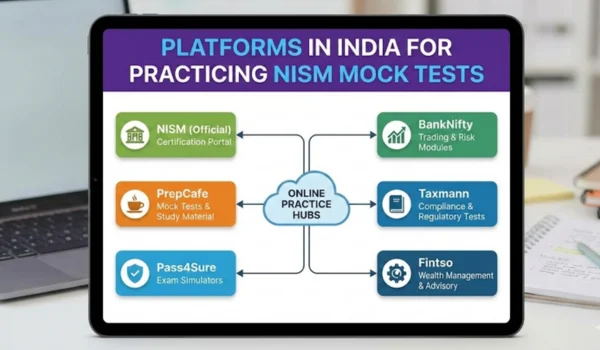Mutual funds have become a popular investment option in India due to their flexibility, expert management, and the ability to start with small amounts. However, when it comes to investing, documentation and KYC (Know Your Customer) compliance are crucial. One of the most common questions asked by new investors is:
“Can I invest in mutual funds without a PAN card?”
The short answer is: Yes, but only in a limited way and with strict conditions.
Let’s understand the role of a PAN card in mutual fund investments, the exceptions, the rules for small investors, and how you can start investing with or without PAN.
What is a PAN Card and Why is it Required in Mutual Fund Investments?
PAN (Permanent Account Number) is a 10-digit alphanumeric identification number issued by the Income Tax Department of India. It is used to track financial transactions and prevent tax evasion.
In mutual fund investments, PAN is required for:
- Completing full KYC (mandatory for all financial products)
- Reporting transactions to the Income Tax Department
- Investing more than ₹50,000 cumulatively
- Redemption or switching between schemes
Can You Invest Without PAN Card?
Yes, but only under the “PAN Exempt KYC” rule, which allows individuals to invest in mutual funds without submitting a PAN card, subject to certain restrictions.
What is PAN Exempt KYC (PEKRN)?
PEKRN (PAN Exempt KYC Registration Number) is a special KYC system created for small investors, particularly for inclusion of individuals without PAN cards, such as:
- Low-income individuals
- Rural investors
- Students or homemakers with limited funds
This KYC type allows individuals to invest in mutual funds up to ₹50,000 per financial year, per mutual fund house.
Who Can Invest Under PAN Exempt KYC?

To be eligible, an investor must:
- Be an individual (not HUF, NRI, company, trust, etc.)
- Provide officially valid documents (OVDs) like Aadhaar, voter ID, passport, driving license, etc.
- Be resident in India
- Invest only in physical mode (not online platforms)
- Invest less than ₹50,000 in a financial year
Key Limitations of Investing Without PAN
Here’s a quick comparison between PAN-based and PAN-exempt investments:
| Feature | PAN-Based Investment | PAN-Exempt Investment (PEKRN) |
| Maximum Investment Allowed | No Limit | ₹50,000 per AMC per FY |
| Investment Mode | Online & Offline | Offline (physical form only) |
| Type of Investor | Any (Individuals, NRIs, etc.) | Only Resident Individuals |
| Documents Required | PAN + Aadhaar + Address Proof | Aadhaar + Voter ID/OVD |
| Redemption Allowed | Yes | Yes |
| Switch Between Schemes | Yes | Yes |
| Tax Deduction at Source (TDS) | Applicable | Applicable |
| Eligible for SIPs | Yes | Generally No |
Steps to Invest in Mutual Funds Without PAN
If you qualify under PAN Exempt KYC, follow these steps:
Step 1: Visit a Mutual Fund AMC or Registrar Office
You need to apply physically at the branch of the AMC (like SBI MF, HDFC MF) or at a registrar like CAMS or KFintech.
Step 2: Fill the PAN-Exempt KYC Form
Request and fill the KYC form for PAN-exempt investors. Provide:
- Aadhaar card
- Voter ID/Passport/Driving License
- Passport-sized photograph
Step 3: Submit Investment Application Form
Choose the mutual fund scheme, fill in the investment details, and submit the form with a cheque or demand draft.
Step 4: Get PEKRN Number
Once approved, you’ll be issued a PAN Exempt KYC Registration Number (PEKRN). You can now use this for investments up to ₹50,000 per year per AMC.
Can I Later Upgrade to Full KYC with PAN?
Yes. If you decide to invest more than ₹50,000 or use online platforms like Groww, Zerodha Coin, Paytm Money, etc., you’ll need to submit your PAN and complete full KYC.
You can easily do this by:
- Visiting the AMC or KYC Registration Agency (CAMS, KFintech)
- Submitting your PAN card
- Completing IPV (In-Person Verification) if required
Once your KYC is updated, your investment limit is lifted.
Why is PAN-Based KYC Recommended?
While PAN-exempt investments are helpful for very small investors, having full KYC with PAN opens up more flexibility:
Benefits of Investing with PAN:
- Unlimited investment potential
- Access to online investing platforms
- Start SIPs in any scheme
- Hassle-free redemptions, switching, and tracking
- Required for tax filing and TDS reconciliation
Moreover, most platforms do not support PEKRN-based investments, so your options remain limited.
Are NRIs Allowed to Invest Without PAN?
No. NRIs (Non-Resident Indians) must submit a valid PAN card to invest in Indian mutual funds, regardless of the amount.
FAQs
Q1. Can a student invest in mutual funds without PAN?
Yes, students can invest up to ₹50,000 in a year through PAN-exempt KYC, using Aadhaar and other valid documents.
Q2. Can I start a SIP without PAN?
Generally no. Most AMCs and platforms require PAN for starting SIPs.
Q3. What happens if I invest ₹50,000 and later get PAN?
Once you submit your PAN and complete full KYC, your investment limit is removed, and you can continue investing seamlessly.
Final Thoughts
While it is technically possible to invest in mutual funds in India without a PAN card, the scope is extremely limited. The PAN-exempt KYC system is designed to encourage financial inclusion for those with small savings, but it’s not suitable for serious or long-term investors.
If you want full access to India’s mutual fund ecosystem — including online investments, SIPs, portfolio tracking, and high-value investments — having a PAN card and completing full KYC is essential.
If you don’t have a PAN card yet, applying for one is free and easy via the NSDL or UTIITSL websites.





